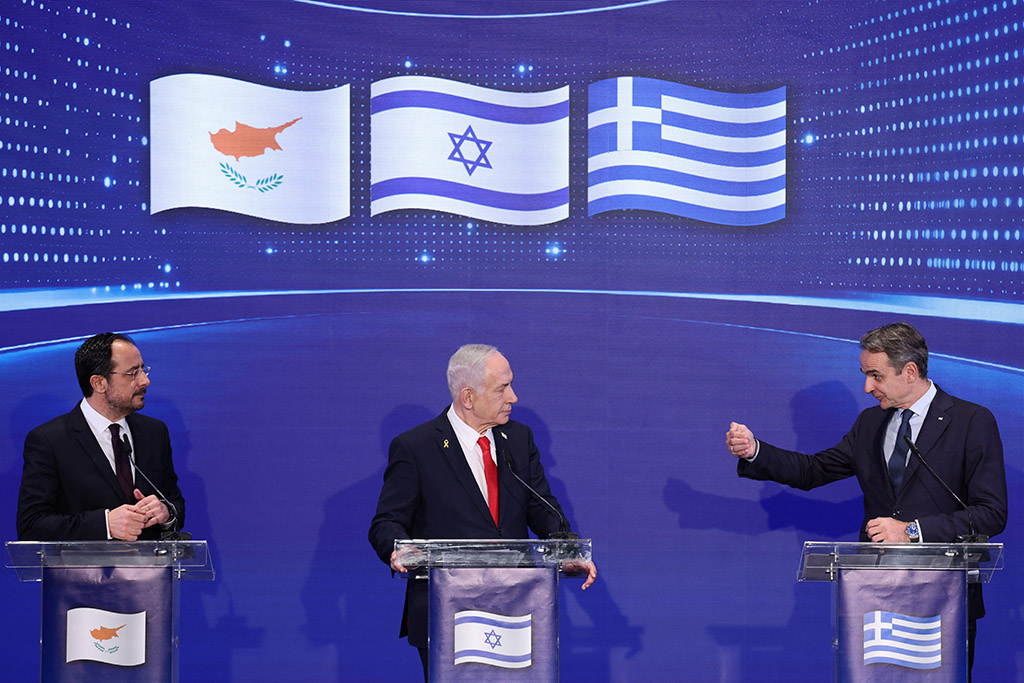EU seeks protections for auto industry in complex talks
U.S. President Donald Trump launched his global tariff assault into overdrive on Wednesday, announcing a new 50% tariff on U.S. copper imports and a 50% duty on goods from Brazil, both to start on August 1.
“I am announcing a 50% TARIFF on Copper, effective August 1, 2025, after receiving a robust NATIONAL SECURITY ASSESSMENT,” Trump said in a post on his Truth Social media platform, a reference to a “Section 232” national security trade investigation into the red metal that has been underway.
The announcement came hours after he also informed Brazil that its “reciprocal” tariff on August 1 would rise to 50% from 10%, a shockingly high level for a country with a balanced U.S. trade relationship.
Trump first broached the copper tariff during a cabinet meeting on Tuesday, setting off a scramble by companies to import as much copper as soon as possible from Chile and other major suppliers.
He blamed the decline of the U.S. copper industry on past administrations, saying copper was needed for semiconductors, aircraft, electric vehicle batteries and military hardware.
“America will, once again, build a DOMINANT Copper Industry,” Trump wrote.
Trump’s Brazil tariff order came in a letter to Brazilian President Luiz Inacio Lula da Silva that vented anger over what he called the “Witch Hunt” trial of Lula’s right-wing predecessor, Jair Bolsonaro, and adding to an increasingly bitter public feud with Lula.
Trump also criticized what he said were Brazil’s attacks on free elections, Americans’ free speech and “SECRET and UNLAWFUL Censorship Orders to U.S. Social Media platforms.” He ordered the U.S. Trade Representative’s office to launch a new “Section 301” unfair trade practices investigation that could add even more tariffs, citing “Brazil’s continued attacks on the Digital Trade Activities of American companies.”
Lula responded to Trump’s letter by issuing a statement saying that any unilateral measure to increase tariffs would be met with a response in accordance with Brazilian law.
Brad Setser, a former U.S. trade official now with the Council on Foreign Relations, said Trump’s action could easily spiral into a damaging trade war between the two democracies.
“This shows the danger of having tariffs that are under the unilateral control of one man,” Setser said. “It’s tied to the fact that Lula beat Trump’s friend Bolsonaro in the election.”
Brazil is the 15th largest U.S. trading partner, with total two-way trade of $92 billion in 2024, and a rare $7.4 billion U.S. trade surplus, according to U.S. Census Bureau data.
Top U.S. exports to Brazil are commercial aircraft, petroleum products and crude oil, coal and semiconductors while Brazil’s top exports to the U.S. are crude oil, coffee, semi-finished steel and pig iron.
The South American country has held off on implementing a digital services tax but has sought to advance legislation with stronger competition regulations on digital platforms.
Trump earlier on his Truth Social media platform issued August 1 tariff notices to seven minor trading partners that exported only $15 billion in goods to the U.S. last year: a 20% tariff on goods from the Philippines, 30% on goods from Sri Lanka, Algeria, Iraq, and Libya, and 25% on Brunei and Moldova.
The latest letters add to 14 others issued earlier in the week including 25% tariffs for powerhouse U.S. suppliers South Korea and Japan, which are also to take effect August 1 barring any trade deals reached before then.
They were issued a day after Trump said he was broadening his trade war by imposing a 50% tariff on imported copper and would soon introduce long-threatened levies on semiconductors and pharmaceuticals. Trump’s rapid-fire tariff moves have cast a shadow over the global economic outlook, paralyzing business decision-making.
NEGOTIATIONS WITH THE EU
As more tariff drama unfolded in Washington, U.S. and European Union negotiators pushed closer to a trade deal to ease Trump’s tariffs on the biggest bilateral U.S. trading partner bloc.
Trump said he would “probably” tell the EU within two days what rate it could expect for its exports to the U.S., adding that the 27-nation bloc had become much more cooperative.
EU trade chief Maros Sefcovic said good progress had been made on a framework trade agreement and a deal may even be possible within days.
Sefcovic told EU lawmakers he hoped that EU negotiators could finalise their work soon, with additional time now from the extension of a U.S. deadline to August 1 from July 9.
“I hope to reach a satisfactory conclusion, potentially even in the coming days,” Sefcovic said.
However, Italian Economy Minister Giancarlo Giorgetti had earlier warned that talks between the two sides were “very complicated” and could continue right up to the deadline.
EU officials and auto industry sources said that U.S. and EU negotiators were discussing a range of potential measures aimed at protecting the European Union’s auto industry, including tariff cuts, import quotas and credits against the value of EU automakers’ U.S. exports.
HIGHEST TARIFF LEVELS SINCE 1934
Equity markets shrugged off the Republican president’s latest tariff salvo on Wednesday, while the yen remained on the back foot after the levies imposed on Japan.
Following Trump’s announcement of higher tariffs for imports from the 14 countries, U.S. research group Yale Budget Lab estimated consumers face an effective U.S. tariff rate of 17.6%, up from 15.8% previously and the highest in nine decades.
Trump’s administration has been touting those tariffs as a significant revenue source. Treasury Secretary Scott Bessent said Washington has taken in about $100 billion so far and could collect $300 billion by the end of the year. The United States has taken in about $80 billion annually in tariff revenue in recent years.
The Trump administration promised “90 deals in 90 days” after he unveiled an array of country-specific duties in early April. So far, only two agreements have been reached, with Britain and Vietnam. Trump has said a deal with India was close.







Click here to change your cookie preferences